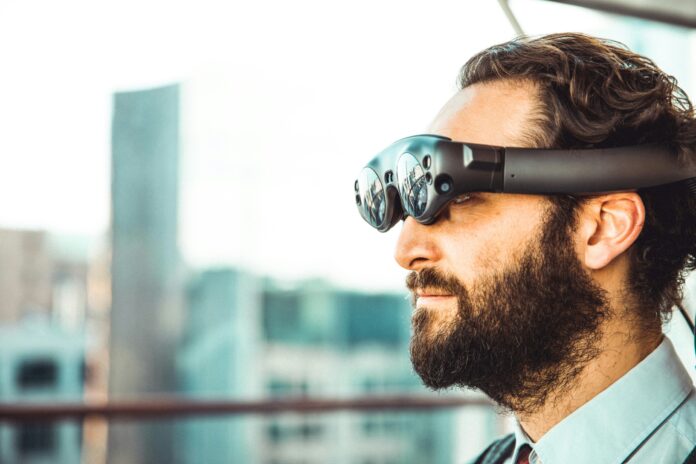By 2024, Augmented Reality (AR) smart home appliances will have advanced to new heights in efficiency, security, and convenience. Investing in these best smart home appliances will allow you to create a contemporary, networked sanctuary in your home. These gadgets offer the newest in functionality and innovation, whether your goal is to add a touch of futuristic flair, improve security, or improve lighting in your home. Savor the advantages of a fully connected home by embracing the future of smart home technology.
Enhanced Product Visualization
1. Try Before You Buy
The ability to see products in real-world environments before making a purchase is one of the biggest benefits of augmented reality (AR) shopping. Retailers of furniture such as Wayfair and IKEA, for instance, provide augmented reality (AR) applications that let users see how furniture will fit and appear in their homes. Customers can virtually arrange a sofa, table, or bed in their living room and see it from various perspectives by utilizing a smartphone or tablet. Customers are better able to make decisions thanks to this “try before you buy” feature, which also lowers the risk of returns and boosts customer satisfaction.
2. Virtual Try-Ons
AR is utilized in the beauty and fashion sectors to offer virtual try-on experiences. Makeup companies such as Sephora and L’Oréal have created augmented reality apps that allow users to preview various makeup products on their faces without having to apply them on. Fashion stores such as Gucci and Zara also provide virtual fitting rooms where customers can see how accessories and clothing will look on them. By bridging the gap between online and in-store shopping, these virtual try-ons improve the experience of shopping online.
Personalized Shopping Experiences
1. Tailored Recommendations
By examining user preferences and behavior, augmented reality (AR) can offer tailored shopping experiences. Retailers can use augmented reality (AR) to provide customers with personalized product recommendations based on their search history, demographic data, and past purchases. An augmented reality app might, for example, recommend home décor pieces that go well with a customer’s current furniture or a new pair of shoes that match a dress they recently bought. These customized recommendations foster client loyalty and raise conversion rates.
2. Interactive Product Information
AR has the potential to improve how consumers are presented with product information. Customers can obtain comprehensive information in an interactive format, including specifications, reviews, and usage instructions, by scanning a product with their smartphone. For instance, customers may be able to scan a product label at an AR-enabled grocery store to view recipes, nutritional data, and even the product’s path from farm to shelf. Customers’ entire shopping experience is improved by this interactive approach to product information, which also helps them make more informed decisions.
Improved Customer Engagement
1. Engaging Marketing Campaigns
Retailers are using augmented reality (AR) to develop immersive and captivating marketing campaigns that draw in customers. With AR, businesses can create interactive games, experiences, and ads that entice consumers to interact with their brands. An augmented reality (AR) filter developed by a cosmetics company could enable users to virtually try on different shades of lipstick and share their looks on social media. These captivating advertising campaigns increase sales, create buzz, and draw in new clients.
2. In-Store Navigation and Assistance
By offering guidance and support, augmented reality (AR) can improve the shopping experience in physical stores. Retailers can use augmented reality (AR) to make virtual maps that direct customers to particular products or areas of the store. Customers can view a virtual route on their smartphones that will take them to the items on their shopping list. Furthermore, as customers navigate the store, augmented reality (AR) can offer real-time assistance by displaying product information, offers, and promotions. This enhances the in-store encounter, increasing its effectiveness and pleasure.
The Future of AR in Shopping
1. Integration with AI and Machine Learning
More artificial intelligence (AI) and machine learning integration is probably in store for the future of augmented reality (AR) in retail. Large volumes of data can be analyzed by these technologies to produce recommendations that are even more precise and customized. Applications for augmented reality powered by AI can anticipate user preferences, streamline inventory control, and improve customer support by utilizing virtual assistants.
2. Expanding AR Applications
The uses of AR technology in retail will grow as it develops further. More sophisticated augmented reality features, like haptic feedback that lets users feel virtual textures and AR glasses that let users shop hands-free, are likely to arrive. Retailers will keep coming up with new ideas and inventive ways to include augmented reality (AR) into their marketing plans and initiatives to engage customers.
Conclusion
In conclusion, by boosting product visualization, offering personalized experiences, and raising customer engagement, augmented reality is drastically altering the shopping experience. The retail industry will be more and more impacted by AR technology as it develops, opening up new possibilities for both customers and retailers. Retailers that embrace augmented reality (AR) can develop more engaging, dynamic, and enjoyable shopping experiences that satisfy the changing demands and expectations of contemporary customers.

